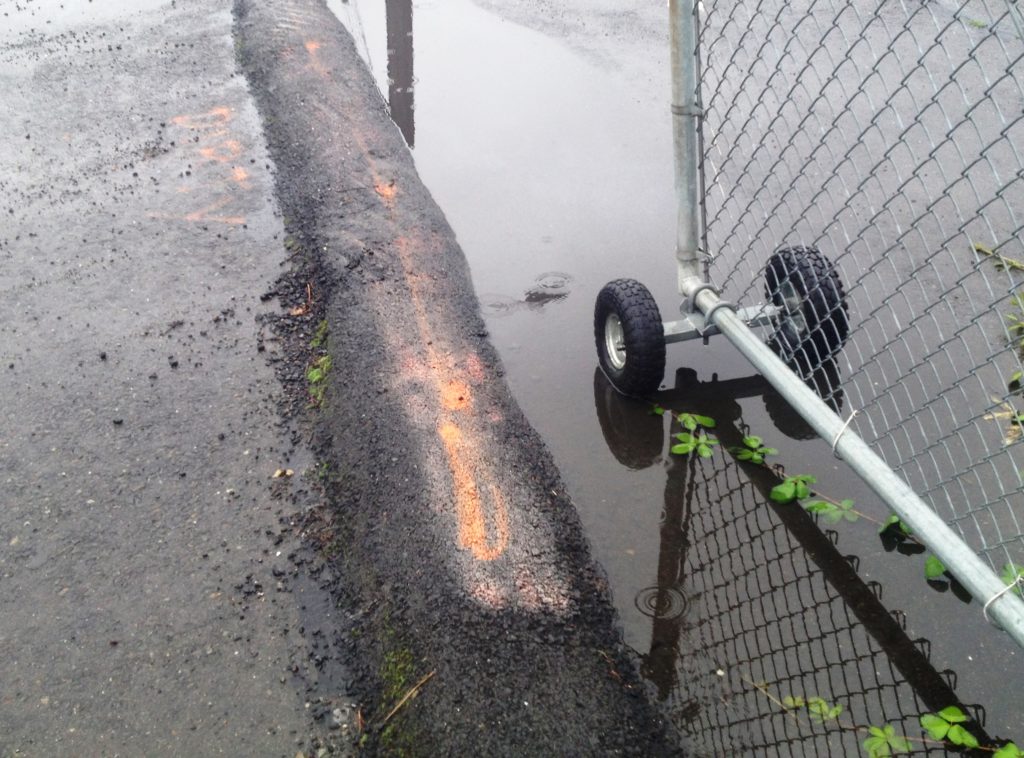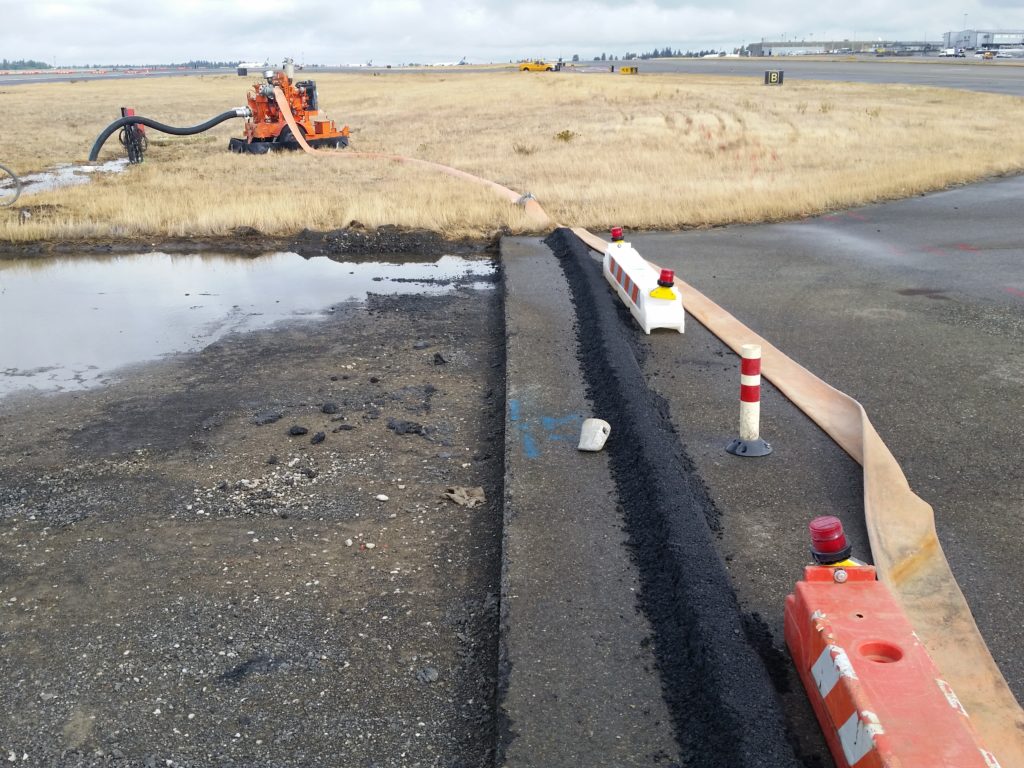Here are a few examples of extruded asphalt berms or curbs:

This berm keeps clean water from draining off the asphalt to the right into the work area to the left. If the clean water was allowed into the work area, the contractor would have much more dirty water to deal with.

This is another example of using asphalt to keep clean runoff from entering the work area.

In this project, we are removing and replacing the asphalt surface on the left. The asphalt curb is used to keep the dirty runoff on the right from entering the work area. Candlesticks are used to delineate the project boundary and keep vehicles from driving over the berm.











